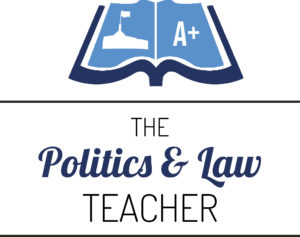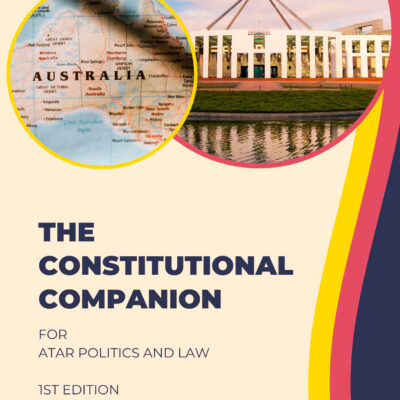The failure of the Morrison Government’s Religious Freedom Bills in February 2022 illustrates several aspects of political and legal power in Australia:
- Parliament can check and balance a government, holding it to account even when the government controls the lower house. This is a Westminster function of the Commonwealth Parliament. It also illustrates the separation of powers and checks and balances between the legislative and executive branches.
- The legislative process provides opportunities for debate, representation and scrutiny. In this case, government bills were rejected after MHRs crossed the floor to represent the interests of a vulnerable Australian community – transgender young people.
- Mandates claimed by governments do not always translate into legislation. Parliament has the power to decide if a mandate is respected. Mandates are claimed by the government and MPs who hold the balance of power in either house. Mandates are based on governments, parties, and individual MPs being elected. Each claims a ‘democratic mandate’. Governments claim to represent the will of the majority, and cross bench minor parties and individual MHRs claim to act in the interests of those they represent. Parliament is the forum in which different mandates compete.
- Political parties are highly influential in law-making in Parliament. The Opposition Labor Party used parliamentary tactics to make it easier for moderate Liberal backbenchers to vote against their government. The tactics had a significant influence on law-making by contributing to the abandonment of government legislation.
- Individuals can also be influential in law-making in Parliament. Independent MHR Rebekah Sharkie’s motion to amend the Sex Discrimination Act ultimately led to the failure of the Religious Freedom Bills. Moreover, five Liberal MHRs acted according to conscience rather than ‘toeing the party line’- when they crossed the floor, making them non-partisan individual MHRs in this particular legislative vote.
- Pressure groups can influence law-making in Parliament by lobbying the government to change laws. The Australian Christian Lobby is an example. It wanted laws protecting religious beliefs after the same-sex marriage laws passed in 2017.
- Australia’s approach to rights at the federal level is to legislate specific rights in particular statutes. This is quite different to comparable liberal democracies like the USA, Canada and the UK. Other liberal democracies have Bills of Rights, which list rights in a single law – either constitutional or statutory.
Background
In 2017, the Commonwealth parliament amended the Marriage Act to legalise same-sex marriage. It was a controversial law that followed a plebiscite to sample public opinion. The Parliament dealt with the matter through a conscience vote – a vote in which political parties do not control their MPs’ voting during the legislative process. Conscience votes are one method by which Parliament legislates complex moral or ethical matters.
Same-sex marriage is controversial because it offends many devout Australians’ sincerely held religious convictions. They, and pressure groups like the Australian Christian Lobby that lobby on their behalf, felt that the same-sex marriage law might infringe religious freedoms. An argument used at the time was as follows; owners of wedding businesses might breach anti-discrimination laws if they refused service to a same-sex couple based on sincerely held religious beliefs. This hypothetical situation suggested that religiously devout people may be forced to stay silent about their religious convictions and act in ways that contravene their beliefs or risk prosecution.
2019 election & the mandate
During the 2019 election campaign, Scott Morrison – a devout Pentecostal Christian – pledged to introduce laws to protect religious rights and freedoms. He was responding to lobbying by the Australian Christian Lobby and similar pressure groups. Having won the election, Mr Morrison could legitimately claim a specific mandate for the new laws.
However, the government waited until November 2021 – near the end of the 46th Parliament’s term – before attempting to legislate Mr Morrison’s election promise. During its term, the Morrison Government had to deal with many contingencies (unexpected events), including the 2020 bushfires, the COVID-19 pandemic, revelations about the workplace culture of Parliament House and the 2022 floods, to name a few. By the time the Religious Freedom Bills were introduced in November 2021, Mr Morrison’s mandate had weakened due to the passage of time and other more urgent priorities dominating his government’s agenda. By the time the bills were introduced, there was a sense that the government was rushing to complete its agenda before the 2022 election.
The Bills
Three bills formed a ‘legislative package’ to be dealt with simultaneously to legislate for religious freedom and related matters. The bills – collectively known as the Religious Freedom Bills – were:
- the Religious Discrimination Bill 2021
- the Religious Discrimination (Consequential Amendments) Bill 2021
- the Human Rights Legislation Amendment Bill 2021
Collectively, the bills would legislate two aspects of religious freedom and rights:
- Protection of belief (religious and atheist); and
- Allow discrimination is based on a genuinely held religious belief.
A third function of the bills was to create a new religious rights commissioner within the Australian Human Rights Commission.
Australia’s anti-discrimination ‘shield’ laws
The first aspect of the Religious Freedom Bills would mirror existing anti-discrimination legislation such as the Racial Discrimination Act 1975, the Sex Discrimination Act 1984 and the Age and Disability Discrimination Acts. These laws prevent discrimination based on particular characteristics like race, sex, age or disability. Australia has legislated a suite of such anti-discrimination laws since the 1970s, many based on international human rights law. The new Religious Discrimination Act would sit alongside existing anti-discrimination statutes as part of Australia’s statutory approach to rights protection at the Commonwealth level.
A Religious Discrimination Act would be relatively uncontroversial if all it did was protect people of faith by adding ‘religion’ to the existing characteristics protected by Australia’s anti-discrimination laws.
Anti-discrimination laws are ‘shields’ that protect rights.
The proposed ‘sword’
The second aspect – i.e. the right to discriminate against others – was designed to allow devout people and religious organisations like churches and church schools to express their faith and discriminate based on genuinely held religious convictions. For example, it would be lawful for a devout business owner to refuse service to a same-sex couple based on a genuinely held religious belief – i.e. to discriminate against a same-sex couple. None of Australia’s other anti-discrimination laws contains such provisions – e.g. the Racial Discrimination Act does not allow people of a certain race the right to discriminate against other people of different races based on genuinely held beliefs. Thus, the proposed Religious Discrimination Act would be fundamentally different to Australia’s other anti-discrimination laws because it would be the only anti-discrimination law that contained a’ sword’ that may cause harm to others. These so-called’ sword’ provisions made Mr Morrison’s signature bill controversial.
A party divided
The Religious Freedom Bills divided the Liberal Party. Moderate backbenchers, led by Bridget Archer and Trent Zimmerman, expressed their concerns about the impact of allowing religiously-justified discrimination against same-sex and transgender people. In response to their concerns, Mr Morrison and senior ministers agreed – in a Liberal Party Room meeting on 8 February – to remove the religious exemption allowing church schools to discriminate against same-sex people. This was to be achieved by repealing Section 5A of the Sex Discrimination Act.
However, Mr Morrison and the senior leadership group of the party argued it was too hard to remove discrimination against transgender people (Section 5B) because of the impact on single-sex schools regarding change-rooms and uniforms. Instead, they proposed to refer this matter to the Australian Law Reform Commission and await its report before addressing transgender rights in separate legislation. The senior leadership group – i.e. ministers – thought that these concessions had satisfied moderate Liberal backbenchers – they expected only two might cross the floor when the Religious Discrimination Bills came to a vote in the House on 10 February.
Crossing the floor
The Liberal Party often describes itself as a “broad church”. This means the party tolerates a wide range of views and perspectives – even to the extent of allowing its MPs to cross the floor on matters of conscience and conviction. The evidence supports the Liberal Party’s claim; between 1950 and April 2019, Coalition MPs represented 96.8% of floor crossings compared to Labor’s 3.1%, and the Coalition accounted for 90.2% of the individual MPs who crossed the floor compared to Labor’s 9.8% (Lundie & McKeown 2020).
However, the trend since 1950 has been fewer floor crossings. Lundie & McKeown point out that the trend shows that “dissent within the… major parties as measured by the extent of floor-crossing is now more tightly controlled by all parties than it was in previous decades”, and this includes the Liberal-led Coalition. They say that “Coalition MPs are more likely to cross the floor in government than opposition. Since [a similar] 2004 study only one floor crossing has altered the outcome of a vote (in the Senate) but not to the final form of the bill…, and the effect of crossing the floor still remains largely symbolic”. In other words, the Liberal Party is still more forgiving of floor-crossing than the ALP. However, floor crossing by party MHRs in either house has had no substantive impact on the outcome of a bill since 1950*.
In the Parliament
The Religious Freedom Bills were moved for a second reading on 8 February 2022. During the second reading debate, openly homosexual Liberal MHR Trent Zimmerman spoke passionately about his experiences of bullying and discrimination when he was at school. He said he would cross the floor and vote against the bills if the transgender exemption in Section 5B of the Sex Discrimination Act remained. The exemption allows lawful discrimination by some schools against transgender students. He said he could not tolerate continuing discrimination against a vulnerable community, especially young people still at school. Bridget Archer expressed similar concerns.
Labor had already prepared amendments to scrap Section 5B of the Sex Discrimination Act. However, the Opposition agreed to allow independent MHR Rebekah Sharkie to move the amendments in the House of Representatives. Labor felt this tactic would make it easier for moderate Liberal MHRs to cross the floor because they could not be accused of siding with the Opposition. Instead, they could vote for an independent member’s amendment. When Rebekah Sharkie moved the amendment, the Speaker called for a division of the House – i.e. a formal vote requiring MHRs to physically move to the Speaker’s right to vote YES or left to vote NO. When they crossed the floor to vote against their government, Zimmerman and Archer were accompanied by three other Liberal backbenchers – Katie Allen, Dave Sharma and Fiona Martin. It was the largest floor-crossing since 1982 and completely surprised the government.
Soon after the House vote, Liberal senator Andrew Bragg told Mr Morrison he would cross the floor in the Senate if the government introduced its bills in the upper house. Stung by the unexpectedly large number of Liberal backbenchers prepared to vote against his government – and knowing the bills would also be defeated in the upper house – Mr Morrison and his Attorney-General Michaelia Cash withdrew the Religious Freedom Bills from the Senate.
Consequences
The parliament defeated a majority government – illustrating its power to check the executive and hold it to account.
Five MHRs crossing the floor to vote against their government in a way that ultimately defeated its legislation is unprecedented in the modern Commonwealth Parliament. Moreover, it was the first time floor-crossing had affected the outcome of a legislative vote in the House of Representatives in many decades.
It was a significant defeat for the government and the Prime Minister himself. Mr Morrison had promised in the 2019 election to introduce the law. He won the election and therefore had a mandate to legislate the bills. However, the Religious Freedom Bills example shows that mandates are no guarantee that Parliament will automatically accept the government’s legislation. Parliament decides what gets legislated, not the government or the people.
*The Medevac legislation, passed against the will of the Morrison Government in 2019, did not involve floor crossing. The law was imposed on a minority government by the House of Representatives after the government had lost two MPs due to a by-election in Wentworth and the resignation of a backbencher. Other bills have been influenced by the threat of crossing the floor, if not by actual floor crossing.
Further reading
PAL News Update V5N1 Jan/Feb 2022, Religious Freedoms & Rights, Government bills prove a headache in the months before election
Reference
Lundie R & McKeown D 2020, Crossing the floor in the federal parliament 1950–April 2019 located at https://www.aph.gov.au/About_Parliament/Parliamentary_Departments/Parliamentary_Library/pubs/rp/rp1920/CrossingTheFloorFederalParliament


